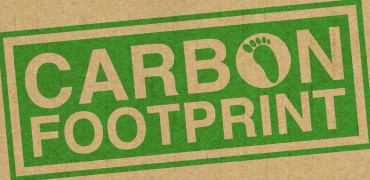Dave Archer explains why we’re going to hear a lot more about embodied carbon in the next few years, and what it means for building services specifiers.
I’d say that it’s a safe bet that we will be hearing a lot more about embodied carbon in 2022 and beyond.
Even though it’s not (currently) included in proposed updates to Part L of the Building Regulations, at Mitsubishi Electric we are already helping clients tackle this issue.
Embodied carbon is a calculation of the carbon associated with the manufacture, transportation, and servicing of a product.
It is a concept that captures all the elements of a product, from cradle to grave. And pulling together a figure for embodied carbon for HVAC products is a complex process.
These products tend to be a combination of multiple materials and components, often sourced from different locations.
Embodied carbon would include all those elements, as well as the carbon emitted from energy used while assembling the product.
This focus on embodied carbon puts manufacturers front-and-centre
Already in the London Plan
There is little doubt that we will see the concept of embodied carbon introduced to Building Regulations in the next few years.
It’s already included in the London Plan 2021 which requires embodied carbon calculations for major new build projects.
However, currently interest in embodied carbon is being driven by clients, who are looking to understand their organisations’ carbon footprints in a very transparent way.
There are currently two main approaches to showing the embodied carbon of an HVAC product.
One is the Environmental Product Declaration (EPD). This uses a national standard calculation and is the most accurate.
However, it’s time consuming and quite costly to produce.
Very few building services products currently have EPDs.
CIBSE TM65
The second method was developed by CIBSE as a Technical Manual: TM65: Embodied carbon in building services – a calculation methodology.
Introduced in early 2021, TM65 is a good mid-level calculation for embodied carbon that uses data collected by manufacturers to create a final figure.
It may not be as accurate as an EPD, but it has enabled manufacturers such as Mitsubishi Electric to come to the market with information much quicker.
And this focus on embodied carbon puts manufacturers front-and-centre.
At Mitsubishi Electric, we have introduced TM65 information for one of our products this year and we will be publishing around 20 documents in 2022 across a range of our products.
We will also be providing some tabulated data so that specifiers can carry out some quick and basic calculations on embodied carbon in their projects at an early stage.
Refrigerants
While many factors affect the embodied carbon of a product, including materials and manufacturing location, in HVAC choice of refrigerant is one of the main contributors to a product’s carbon footprint.
We have already been increasing the application of low-GWP (Global Warming Potential) refrigerants across our product ranges.
For example, the Mitsubishi Electric e-series chillers use R32 refrigerant, as does our Hybrid VRF range.
HVRF also reduces the total amount of refrigerant in the system by using water to transfer heating and cooling into the occupied space.
Shorter supply chains
Longer supply chains also add to the embodied carbon of a product, so being able to reduce these can be helpful.
Mitsubishi Electric recently invested over £15 million to extend its factory in Livingstone, Scotland.
Here, we manufacture our low-carbon heat pumps, allowing us to meet the growing UK demand for this technology from a local production centre.
By decarbonising the operation of buildings, and making them more energy efficient, we are making the up-front carbon a larger proportion of lifetime emissions.
It’s a side effect that needs close attention, because as we approach that 2050 net-zero target, we’re going to have to work harder to find further reductions.
Carbon embodied in our building services is a good place to start.
Dave Archer is National M&E Manager




